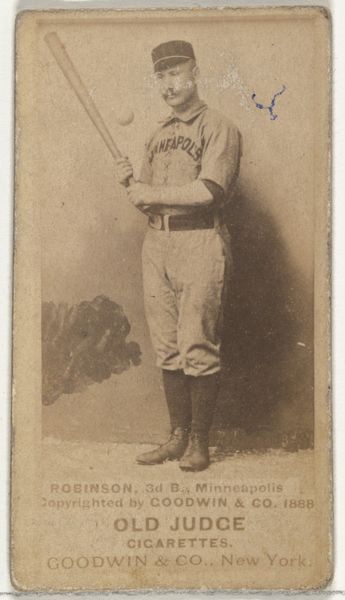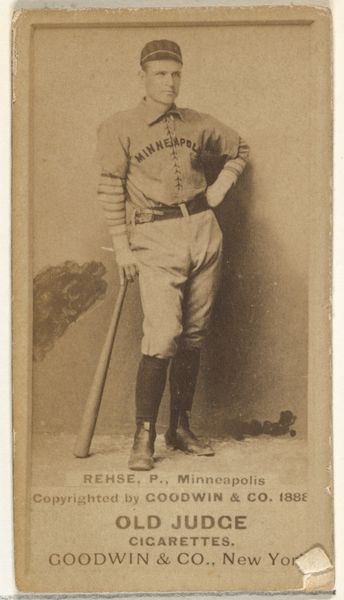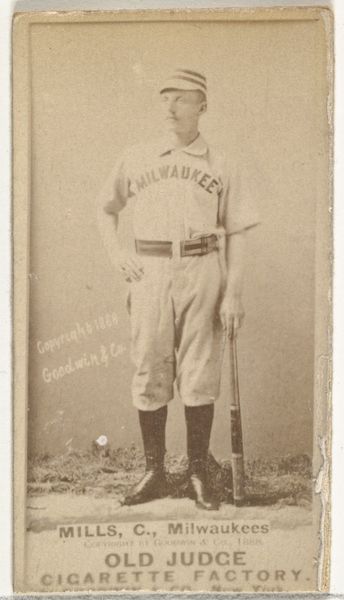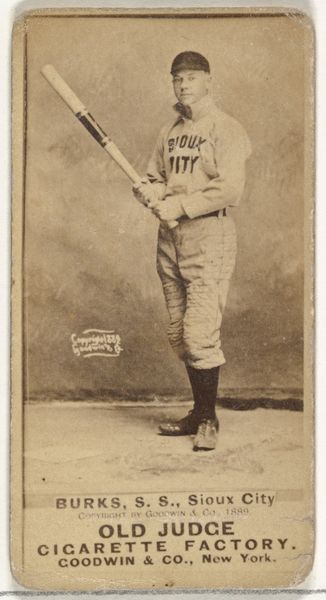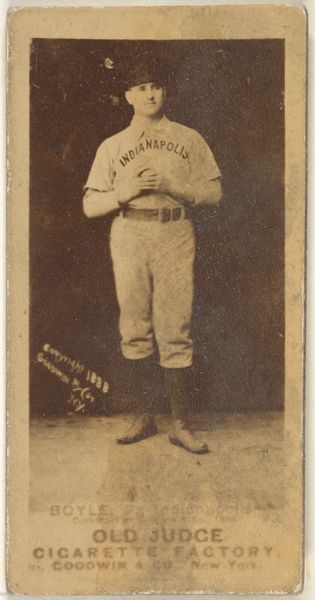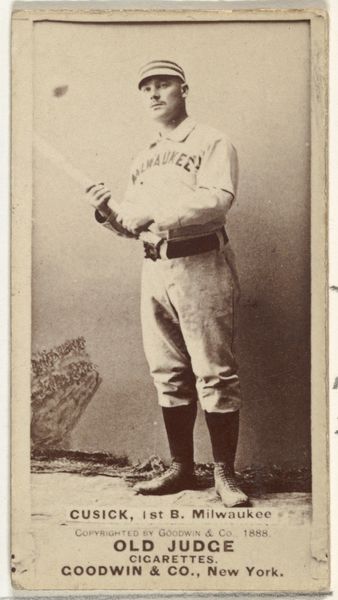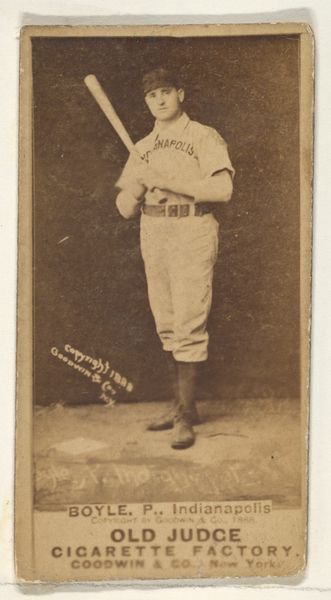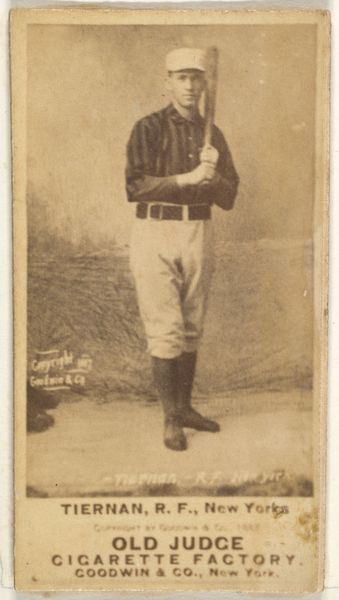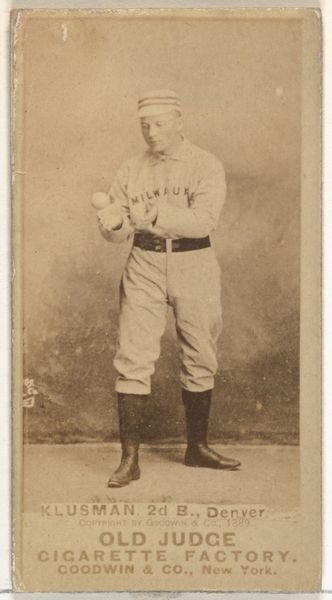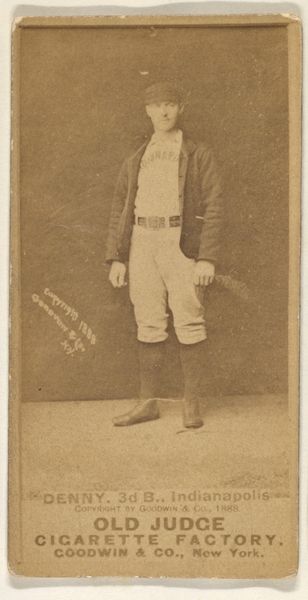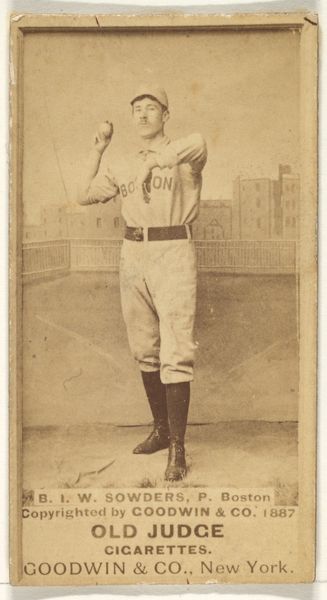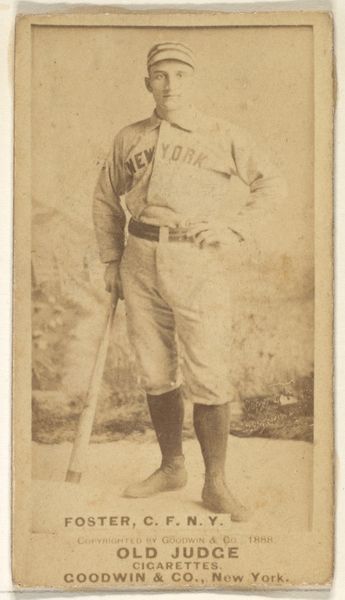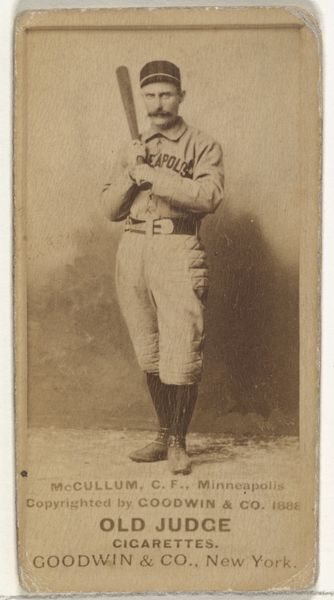
Owen Joseph Patton, Right Field, Minneapolis, from the Old Judge series (N172) for Old Judge Cigarettes 1888
0:00
0:00
print, paper, photography
#
portrait
# print
#
impressionism
#
baseball
#
paper
#
photography
#
men
#
athlete
Dimensions: sheet: 2 11/16 x 1 3/8 in. (6.9 x 3.5 cm)
Copyright: Public Domain
Curator: This is "Owen Joseph Patton, Right Field, Minneapolis," a photographic print from the Old Judge series, created around 1888 by Goodwin & Company. Editor: It's instantly captivating. There's a sense of both strength and melancholy in his stance, a solitary figure caught mid-motion, like a fleeting memory. And the sepia tone lends a real feeling of antiquity. Curator: The image speaks to a burgeoning culture of celebrity, driven by the rise of mass media. Patton, here, transcends merely being a baseball player; he becomes a commodity, linked inextricably with "Old Judge" cigarettes. Editor: Indeed, cigarette cards often depicted ideals of manhood and strength in that era. Note how the oval shape mirrors classic cameo portraits of nobility or renowned citizens. But in his uniform, Patton democratizes this historical form. The Minneapolis script across his chest is almost a heraldic crest. Curator: Yes, the iconography is compelling. Baseball was becoming America's pastime, and these portraits captured its heroes. However, the racial dynamics of the sport and society at the time need consideration; such platforms often excluded many. Editor: It makes me reflect on what these cards represented to early baseball fans, like tangible symbols of their connection to the sport, of a shared American experience. Curator: Absolutely. His expression, gazing off into the distance, hints at broader socio-economic anxieties and dreams intertwined with the rise of spectator sports. This photo serves as a tiny window onto the cultural and economic transformations underway in late 19th century America. Editor: Ultimately, seeing his determined, yet melancholic gaze, it resonates still. His gesture is of giving; something timelessly human remains even behind all of the branding, fame and commodification. Curator: A profound reminder that objects carry complex stories of ambition, access, and identity that remain relevant for our continued understanding.
Comments
No comments
Be the first to comment and join the conversation on the ultimate creative platform.
